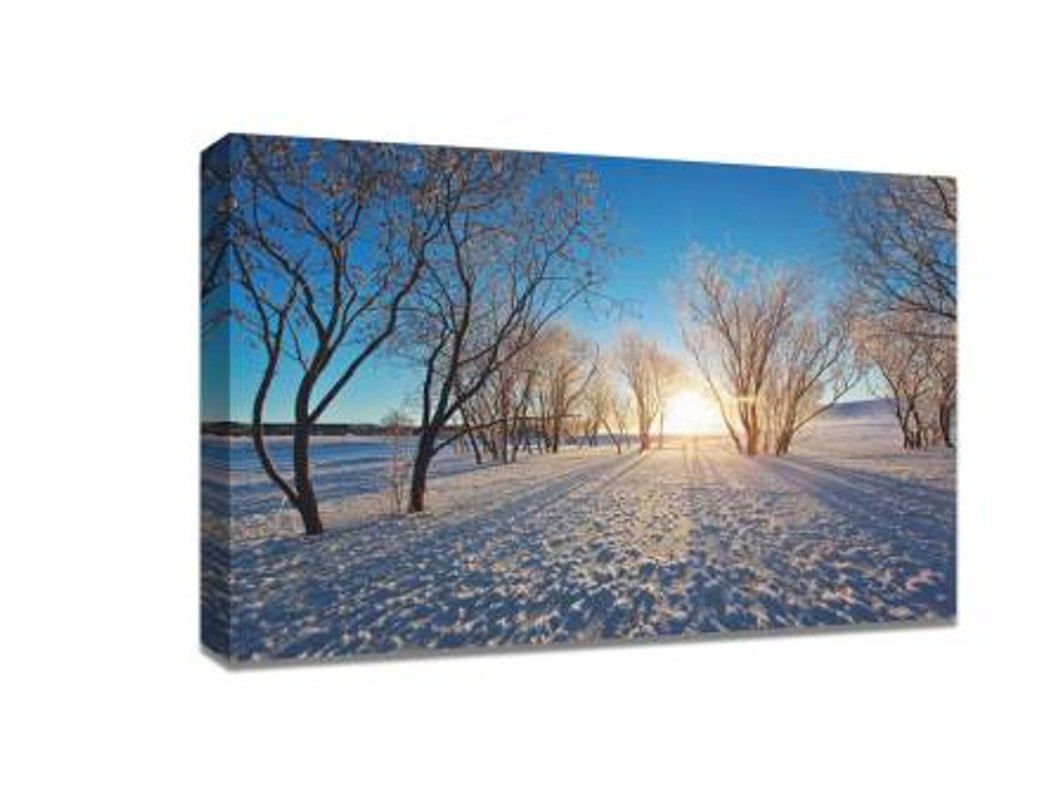Practical Winter Snow Shooting Skills for Stunning Winter Photography
Winter is the season for breathtaking snow landscapes, offering a unique opportunity for photographers to capture stunning imagery. However, shooting in snowy conditions presents a few challenges, especially when it comes to lighting, exposure, and focus. Whether you’re a beginner or a seasoned photographer, these practical winter snow shooting skills will help you create amazing photos that stand out. And if you’re thinking of printing your photographs, consider turning them into cheap canvas prints to display your masterpiece with long-lasting quality.
1. Be Prepared for Harsh Conditions
When photographing in the snow, the weather can be unpredictable. It's essential to be prepared for cold temperatures, snow, and possibly rain. Dress in layers to ensure comfort and safety. Waterproof gear is a must for both you and your camera. You don’t want your gear to be damaged, so consider investing in a camera bag that is both insulated and waterproof.
2. Adjust Your Camera Settings for Snow
One of the most common mistakes in snow photography is the overexposure of the snow. Snow reflects a significant amount of light, often leading to images that are too bright. To prevent this, adjust your camera’s exposure settings. You can compensate for the bright snow by reducing the exposure by 1 or 2 stops.
Set your camera’s white balance to ‘cloudy’ to give the snow a slightly warmer hue and prevent it from looking too cold or bluish. Don’t forget to increase your ISO if the light is low, but be cautious of going too high to avoid grainy photos.
3. Use a Polarizing Filter
A polarizing filter is a game-changer when photographing snowy landscapes. It helps reduce glare from the snow’s reflective surface, bringing out more vivid colors in the sky and reducing the overall brightness. This makes your snow scenes look more natural and can dramatically improve the final image quality.
4. Focus on Composition
Composition plays a critical role in winter photography. Snow-covered landscapes provide plenty of opportunities for captivating shots, but you’ll want to carefully consider your angles and the elements in your scene. Look for contrasting elements, such as trees, buildings, or people against the bright snow. Also, try to frame your subject with leading lines, like pathways or fence posts, that guide the viewer’s eyes into the scene.
5. Capture the Action
Winter isn’t just about static landscapes; it’s also a great time to capture action shots. From people skiing or snowboarding to wildlife interacting with the snow, there’s always something happening. Adjust your shutter speed to freeze motion or create blur for an artistic effect. Use a fast shutter speed for fast-moving subjects to ensure clarity and sharpness.
6. Protect Your Gear
Snow and cold weather can be tough on your camera equipment. Always keep your camera gear in a protective case when not in use, and make sure to wipe down any snow or moisture from your lens between shots. It’s also a good idea to bring extra batteries, as cold weather can deplete their charge faster than usual.
7. Embrace the Golden Hour
In winter, the golden hour—just after sunrise and before sunset—can offer softer, more flattering light that enhances the beauty of snow scenes. During this time, the snow will glow with warm hues, creating magical photos. Plan your shoots around this window to take advantage of the natural light and capture the most stunning images possible.
8. Post-Processing Tips
After your shoot, consider editing your photos to enhance details and correct any exposure issues. Brighten up the shadows in your images to reveal details hidden beneath the snow. If your photo feels too cold, you can warm it up in post-processing to bring out the snow’s natural texture and vibrancy.
Conclusion
Winter snow photography is an exciting and rewarding genre. With these practical tips, you can create stunning snow-covered images that capture the beauty of the season. Don’t forget that after your shoot, you can showcase your best shots in high-quality cheap canvas prints, preserving your work for years to come.
Recent Posts
-
The Best Canvas Prints for Your Bedroom: Create a Relaxing Atmosphere
Choosing the right artwork for your bedroom can completely transform the way the space feels. A bedr …11th Dec 2025 -
How to Mix Canvas Prints with Other Home Decor Elements
Creating a well-designed home interior requires more than simply selecting beautiful artwork. The re …11th Dec 2025 -
Top 5 Affordable Canvas Print Ideas for Your Children's Room
When it comes to decorating your child's room, it's important to create a space that feels as fun, p …8th Dec 2025
